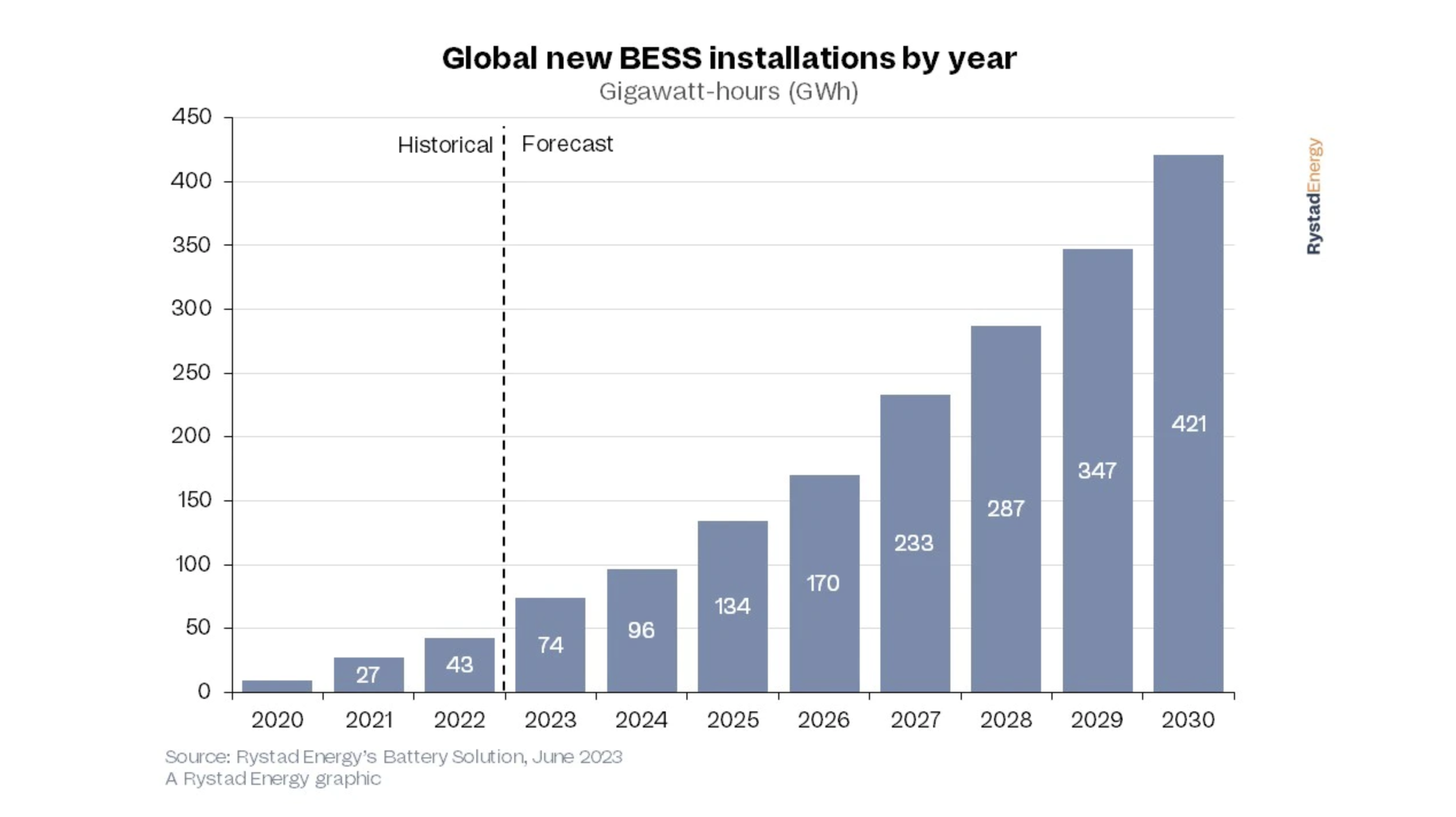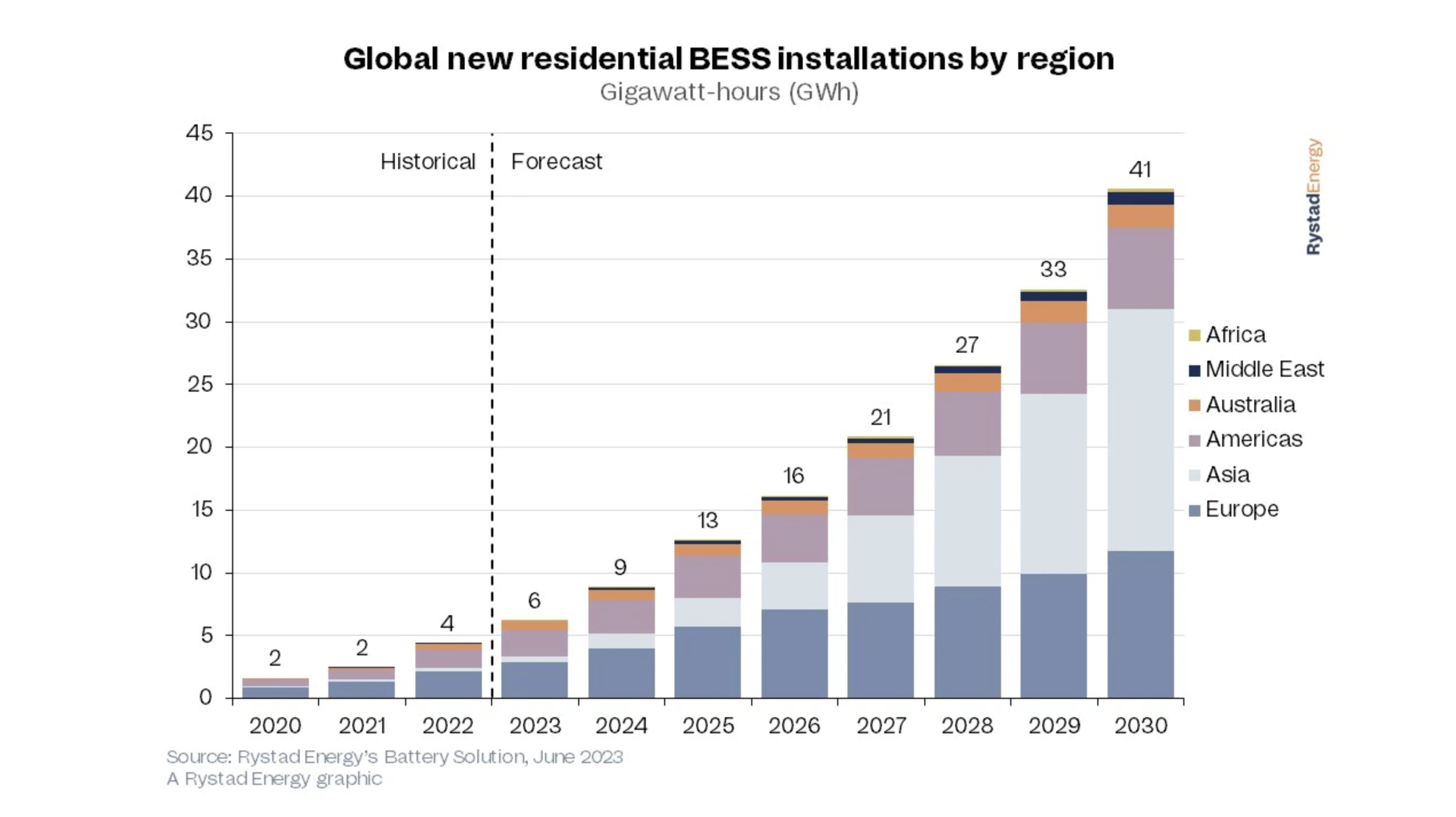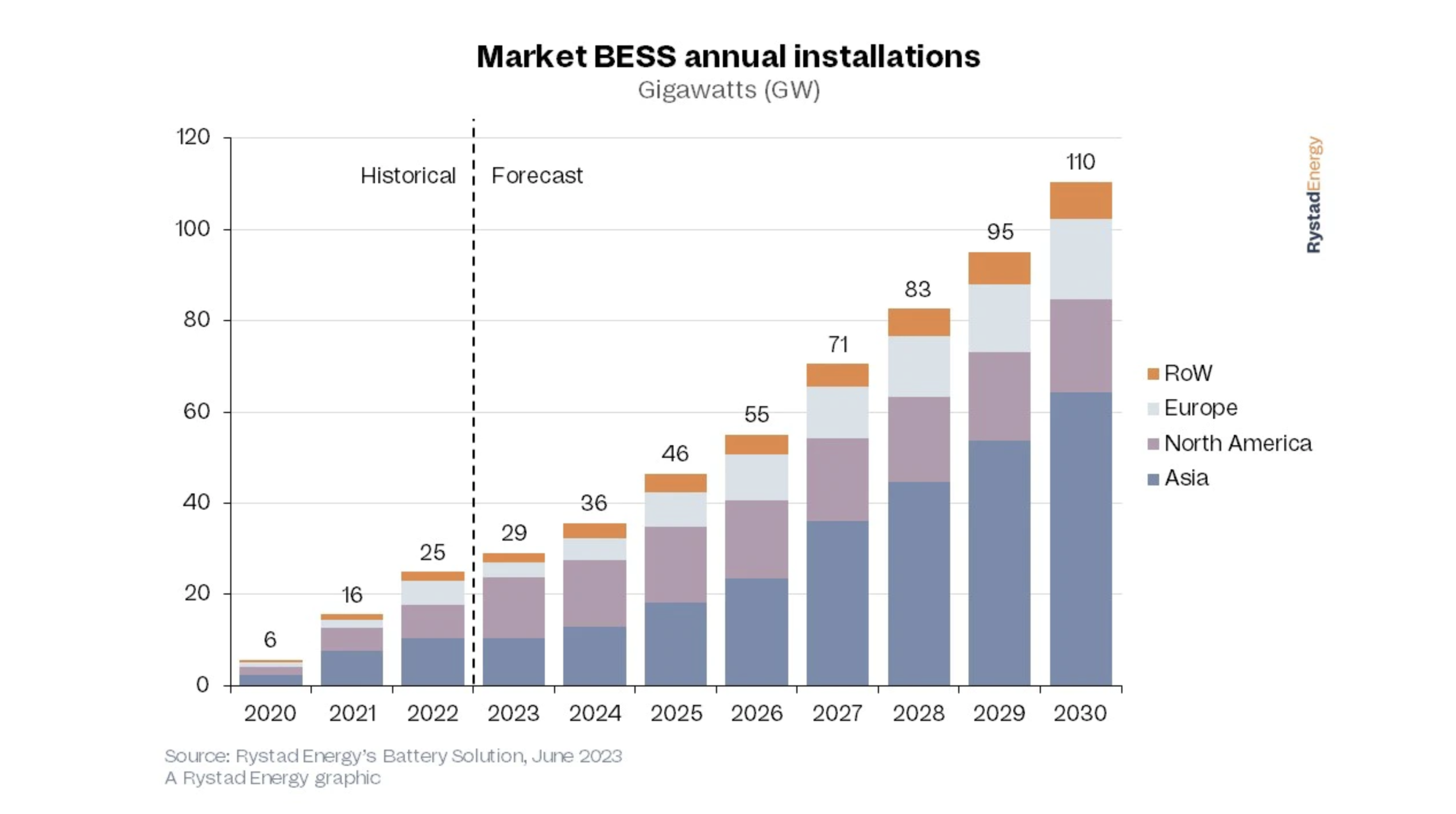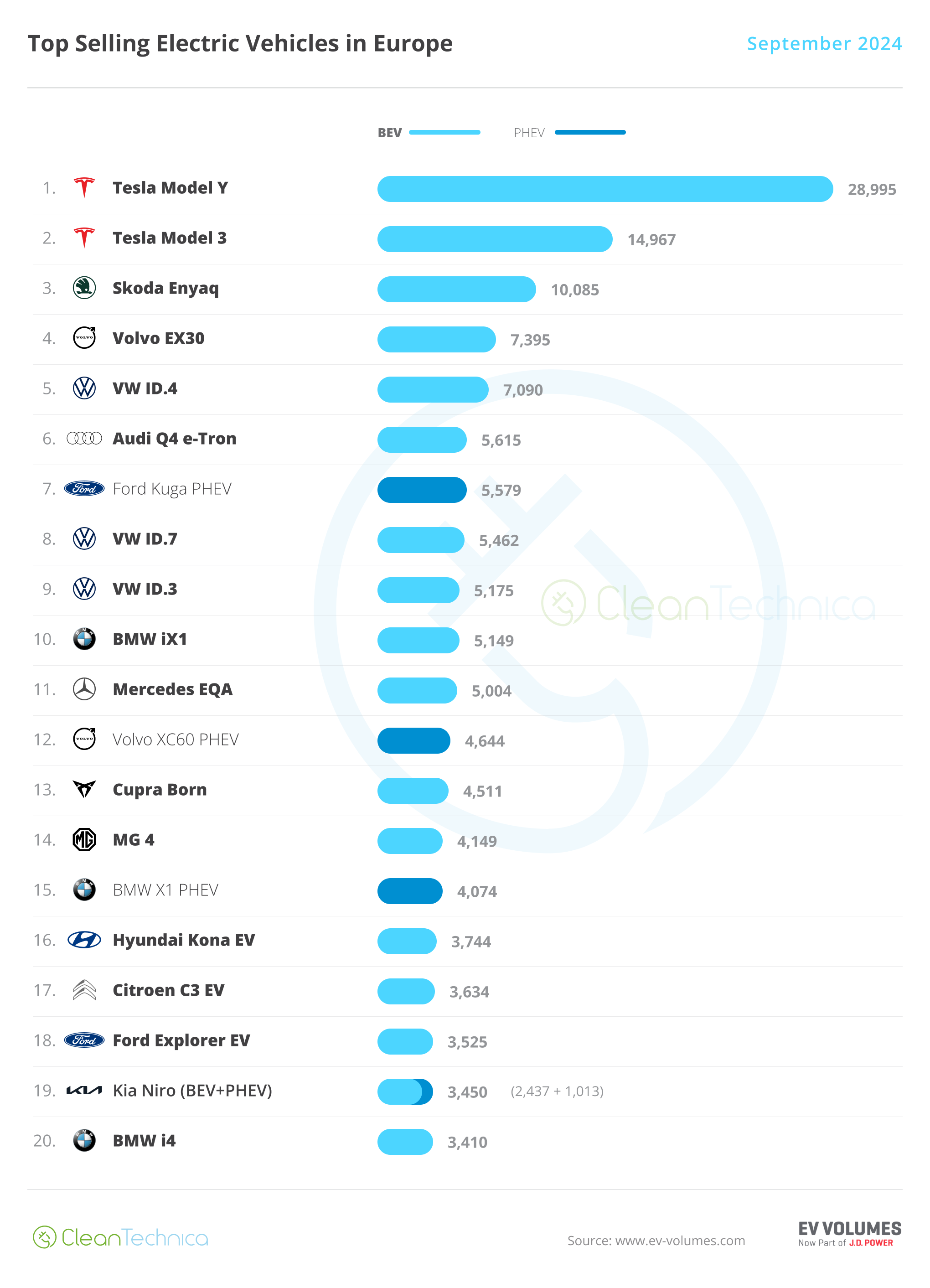
When you predict the future, one thing is almost guaranteed — that you will be wrong. Nonetheless, people want to know what the future holds, and some people have methods or insights to get closer to that future than others. The electric vehicle revolution depends on one thing more than any other — the scaling up of battery production — and this is where there’s quite a bit of uncertainty, so take any forecasts with a grain of salt. That said, this is such a big matter that we like to explore any decent looking forecasts we find, and we’ve got another one to look at today.
This battery energy storage forecast comes from Rystad Energy. The prediction is that energy storage installations will surpass 400 GWh a year in 2030, which would be 10 times more than current annual installation capacity. Today’s energy storage installations may seem minimal compared to what they are expected to be in 2030, but they have been growing fast already. New energy storage capacity in 2022 was 60% higher than in the year before. 43 GWh were added last year. This year, 74 GWh are expected to be added, which would be 72% more than last year.
The growing energy storage market is largely being attributed to dropping battery storage costs as well as “incentives in North America, governmental funding programs in Europe, coupled with robust renewable capacity expansion in mainland China.”
Naturally, GWh concerns energy storage capacity, while GW represents power capacity. While Rystad Energy projects energy storage capacity rising above 400 GWh by 2030, they expect power capacity to rise to 110 GW by then. That is “almost equivalent to the peak residential power consumption for France and Germany combined,” the company adds.
Here’s Rystad Energy’s forecast for annual energy storage capacity from 2020 to 2030:
Here’s the same forecast but split out by region:
And here’s the same forecast split out by continent:
Regarding the expected growth in North America and Europe, Rystad Energy writes: “Government policies are playing an important role in incentivizing investments and capacity expansion. Last year’s US Inflation Reduction Act has catalyzed renewable and clean tech expansion, boosting expected solar and onshore wind capacity by 40% and expecting to add more than 20 GW battery capacity compared to before the Act. As result, the US battery capacity will exceed 130 GW by 2030.
“The European Green Deal Industrial Plan aims to accelerate the transition to a sustainable and low-carbon industrial sector in Europe, and gradually supports the BESS development in addition to the local fundings for BESS developers – for example, a £32 million energy storage funding program in the UK. China is committed to peaking its emissions by 2030 and sees battery developments as a steppingstone to achieving that goal. The country’s clean energy development will accelerate in the coming years, increasing the share of renewables in its power mix.”
In China, energy storage growth (even bigger than in those other two markets) is expected to grow due to power security concerns and massive growth of solar and wind power, which energy storage complements perfectly.
Energy storage is expected to grow at all levels — utility scale, smaller microgrid scale, and residential scale. Residential energy storage growth is expected to ramp up everywhere rooftop solar PV does, but especially in Europe due to policy support and how European energy markets are managed. “Europeans are pioneers in utilizing BESS in their homes, as tax credits and high-power prices during peak periods have motivated consumers.”
Sign up for daily news updates from CleanTechnica on email. Or follow us on Google News!
Have a tip for CleanTechnica, want to advertise, or want to suggest a guest for our CleanTech Talk podcast? Contact us here.
Former Tesla Battery Expert Leading Lyten Into New Lithium-Sulfur Battery Era — Podcast:
I don’t like paywalls. You don’t like paywalls. Who likes paywalls? Here at CleanTechnica, we implemented a limited paywall for a while, but it always felt wrong — and it was always tough to decide what we should put behind there. In theory, your most exclusive and best content goes behind a paywall. But then fewer people read it! We just don’t like paywalls, and so we’ve decided to ditch ours. Unfortunately, the media business is still a tough, cut-throat business with tiny margins. It’s a never-ending Olympic challenge to stay above water or even perhaps — gasp — grow. So …




.jpg)


